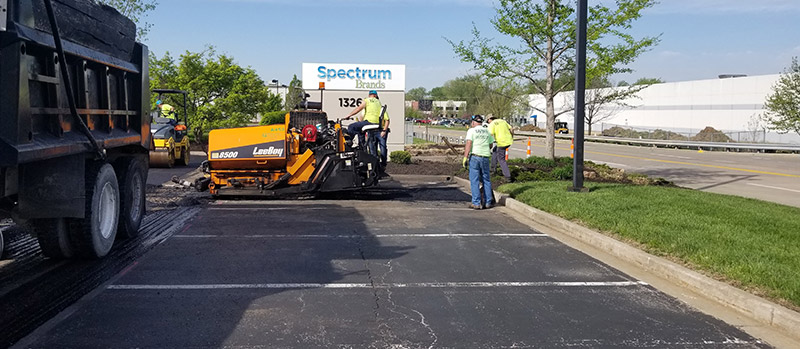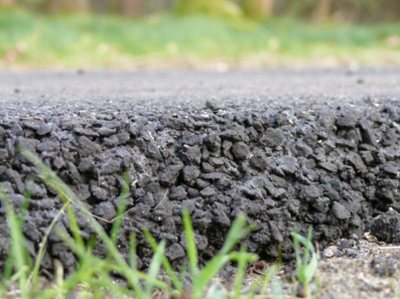A1 Professional Asphalt & Sealing Llc - The Facts
Table of ContentsA1 Professional Asphalt & Sealing Llc - TruthsA1 Professional Asphalt & Sealing Llc - The FactsWhat Does A1 Professional Asphalt & Sealing Llc Mean?The Facts About A1 Professional Asphalt & Sealing Llc Uncovered10 Simple Techniques For A1 Professional Asphalt & Sealing Llc

The oil in a vehicle engine is not just oil. It has a range of additives to enhance the vehicle's performance. These consist of polymers, thickness modifiers, warmth stabilizers, added lubes, and use ingredients. The REOB consists of all the ingredients that remained in the waste oil as well as the wear metals from the engine (primarily iron and copper).
However, by making several blends making use of various REOB samples and different asphalt binders, the variations mostly can be averaged out. Numerous States supplied samples of recognized REOB make-up to TFHRC researchers, who examined the samples to contrast the portion of included (recognized) REOB to the discovered (checked) amount. The analyses showed a similar percent of included and found REOB.
Things about A1 Professional Asphalt & Sealing Llc
None of those States understood that the asphalt they were getting consisted of REOB. One State insisted its samples had no REOB - https://alasphaltseal.wixsite.com/a1asphaltseal/post/a1-professional-asphalt-repairs-enhancing-roads-with-excellence.
Of the 1,532 examples evaluated, 12 percent included REOB, and some consisted of significantly high degrees of it at 1020 percent. The highest level was 34 percent in a sample from Texas, which TxDOT had actually utilized in a patching substance. This testing also disclosed the visibility of phosphoric acid in 11 percent of the samples, and 2 percent consisted of ground tire rubber.
2 years ago at TRB's annual conference, the Federal researchers held an REOB workshop and presented the findings of their laboratory examinations to a standing room-only group. Some agencies do not particularly ban REOB, they do impose physical examinations that prevent its useeffectively a restriction. Others do not prohibit it by requirements, however have arrangements with asphalt providers to stay clear of the use of REOB
The Only Guide for A1 Professional Asphalt & Sealing Llc
Ohio and Texas limitation degrees to much less than 5 percent of the asphalt. To develop a trusted examination method that all States can make use of, the TFHRC researchers established up a round-robin examination strategy.
The participants are checking the samples separately making use of the guidelines offered by the TFHRC scientists. The outcome will be a recommended AASHTO examination method that any type of State can embrace and use.
The pavement with REOB, which lies 0.6 mile (1 kilometer) from the pavement without REOB, has similar subgrade, website traffic density, and climate. However, the segment of Highway655 with 5 to 10 percent REOB revealed substantial fracturing. In this instance, the existence of REOB was the identified root cause of fracturing at a reduced temperature levels.
"In our experience in copyright, also little amounts of 23 percent can be an issue." Similarly, a section of test pavement in Minnesota (MN1-4) located to contain REOB additionally split prematurely. The sidewalk performed well for the first 3 to 4 years, however after that began to fracture. This sidewalk is additionally based on reduced temperatures.
The smart Trick of A1 Professional Asphalt & Sealing Llc That Nobody is Discussing
The examinations were not substantial, but they revealed that at levels of 6 percent or even more, the tensile stamina of the asphalt dropped dramatically. At a level of 3.5 percent REOB, the variant in the physical test techniques was more than the impact of REOB. In reality, it was challenging for researchers to assess whether REOB was present.

One binder parameter thought about is the distinction in between the reduced temperature level critical spec temperature level for stiffness (S) in the bending beam rheometer and the bending light beam rheometer creep slope (m-value) kept in mind as Tcritical. 2 independent study groups, one from AASHTO and the other from the Asphalt Institute, wrapped up that even more research study is required on the usage of REOB in asphalt.
Previously, all asphalt testing gauged engineering buildings such as rigidity. These tests do not reveal what products had actually been included to the asphalt. One sample obtained during the TFHRC study had an extremely odd analysis. The sample had the adhering to test results: Superpave PG 64-28 with a high temperature level grade of 67.3 Tcritical on the bending light beam rheometer was 6.7 levels Celsius.

Rumored Buzz on A1 Professional Asphalt & Sealing Llc
These outcomes show there are weak points in the standardized design screening methods that might be manipulated. The producer might have a financial advantage and the item passes all the standard examinations, however the item may not be valuable to making certain long-term efficiency. To address this problem and the expansion of brand-new asphalt additives and extenders, TFHRC is beginning a study program to make use of handheld spectroscopic gadgets, x-ray fluorescence spectroscopy, and Fourier change infrared spectroscopy to enable evaluations to be carried out in the field instead than having a knockout post to take samples back to the lab.